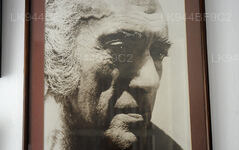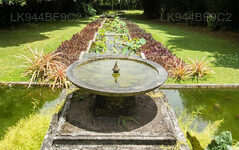
Bentota City
Bentota, a tropical paradise on Sri Lanka's southwest coast, invites you to unwind in its pristine beauty. Discover golden beaches, enjoy water sports on the Bentota River, and visit the vibrant Bentota Bazaar. Luxurious resorts, rich cultural experiences, and scenic landscapes make it an ideal coastal retreat.
Bevis Bawa
Bevis Bawa wurde am 26. April 1909 als Sohn des bekannten Anwalts Benjamin Bawa und seiner Frau, einer Dame niederländisch-bürgerlicher Abstammung, geboren. Mit seinem Stammbaum ging er weiter zum Royal College, wo er offenbar ein ziemlich junger Rebell war. Als ihm die Chance geboten wurde, in England Kunst zu studieren, lehnte er diese mit der Begründung ab, dass man es entweder drauf habe oder nicht, und beschloss, seine Bemühungen stattdessen darauf zu konzentrieren, den Beruf des Pflanzers zu erlernen.
Im Jahr 1929 trat Bevis der Ceylon Light Infantry bei, einem Herrenregiment, wo er alle so beeindruckte, dass er zum Adjutanten des Gouverneurs von Ceylon ernannt wurde. Es war eine Position, die er unter nicht weniger als vier Gouverneuren innehatte – Stubbs, Caldecott, Monck-Mason Moore und Soulbury – und gleichzeitig die unerwünschte Aufmerksamkeit der Gesellschaft von Colombo abwehrte, die ihn als einen der begehrtesten Junggesellen überhaupt ansah.
In den 50er und 60er Jahren machte er sich einen Namen, indem er eine Zeitungskolumne mit dem Titel „Briefly by Bevis“ schrieb. Zunächst drehte er sich um das vornehme Thema der Landschaftsgärtnerei, bevor er begann, die Wichtigtuereien der lokalen Gesellschaft zu verspotten, die er in seinen Prosatexten mit Freude durchbohrte und zerriss Ziele, die er am attraktivsten fand; Möchtegerns, großartige Heuchler und soziale Aufsteiger. Er wagte den Versuch, Landschaftsgärtner als Vollzeitberuf zu betreiben (ein moderner „Capability“-Brown), doch bald darauf beschloss Bevis, Schluss zu machen und zog sich in die Bequemlichkeit von „ BRIEF “ zurück.
Bevis begann 1929 mit der Arbeit an Brief, als seine Mutter es ihm vermachte. Damals handelte es sich um eine Kautschukplantage, und der pragmatische Pragmatiker wählte offenbar bei der Wahl des Standorts für den Bau seines Hauses das Stück mit den schwächsten Kautschukbäumen aus und fällte sie. Bevis‘ jüngerer Bruder Geoffrey war der berühmteste Architekt, den Sri Lanka je hervorgebracht hat; Doch während er bei seiner Arbeit einen eher formal strukturierten Ansatz wählte, gefiel Bevis die spielerischere Herangehensweise. Was Bevis jedoch mit seinen Gärten und Skulpturen machte, hat viel mit dem gemeinsam, was Geoffrey mit seinen Häusern und Räumen machte. Ihre vielen Kreationen waren auf einzigartige Weise vom Geist des Ortes geprägt; diese tiefe und fast ursprüngliche Verbindung zwischen der Umgebung und den Kreationen, die sie inspirierte.
About Galle District
Galle is a city situated on the southwestern tip of Sri Lanka, 119 km from Colombo. Galle is the best example of a fortified city built by Europeans in south and Southeast Asia, showing the interaction between European architectural styles and south Asian traditions. The Galle fort is a world heritage site and the largest remaining fortress in Asia built by European occupiers.
Galle is the best example of a fortified city built by Europeans in south and Southeast Asia, showing the interaction between European architectural styles and south Asian traditions. The Galle fort is a world heritage site and the largest remaining fortress in Asia built by European occupiers.
Galle is a sizeable town, by Sri Lankan standards, and has a population of 91,000, the majority of whom are of Sinhalese ethnicity. There is also a large Sri Lankan Moor minority, particularly in the fort area, which descend from Arab merchants that settled in the ancient port of Galle.
About Southern Province
The Southern Province of Sri Lanka is a small geographic area consisting of the districts of Galle, Matara and Hambantota. Subsistence farming and fishing is the main source of income for the vast majority of the people of this region.
Important landmarks of the Southern Province include the wildlife sanctuaries of the Yala and Udawalawe National Parks, the holy city of Kataragama, and the ancient cities of Tissamaharama, Kirinda and Galle. (Although Galle is an ancient city, almost nothing survives from before the Portuguese invasion.) During the Portuguese period there were two famous Sinhalese poets called Andare who was from Dickwella and Gajaman Nona who was from Denipitiya in Matara District, composing poems on common man.

























